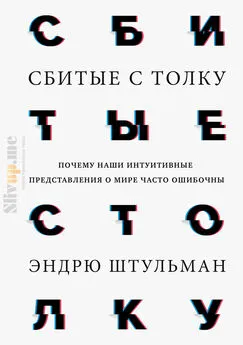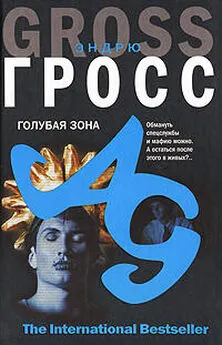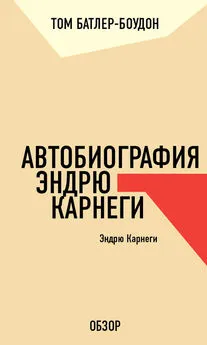Эндрю Штульман - Сбитые с толку
- Название:Сбитые с толку
- Автор:
- Жанр:
- Издательство:Манн, Иванов и Фербер
- Год:2020
- Город:Москва
- ISBN:9785001177616
- Рейтинг:
- Избранное:Добавить в избранное
-
Отзывы:
-
Ваша оценка:
Эндрю Штульман - Сбитые с толку краткое содержание
Сбитые с толку - читать онлайн бесплатно ознакомительный отрывок
Интервал:
Закладка:
Galilei, G. (1632/1953). Dialogue concerning the two chief world systems, Ptolemaic and Copernican. Oakland: University of California Press. Издание на русском языке: Галилей, Г. Диалог о двух системах мира / Г. Галилей. М.; Л.: ГИТТЛ, 1948.
Galili, I. (2001). Weight versus gravitational force: Historical and educational perspectives. International Journal of Science Education, 23, 1073–1093.
Geerdts, M. S., Van de Walle, G. A., and LoBue, V. (2015). Daily animal exposure and children’s biological concepts. Journal of Experimental Child Psychology, 130, 132–146.
Gelman, S. A., and Legare, C. H. (2011). Concepts and folk theories. Annual Review of Anthropology, 40, 379–398.
Gelman, S. A., Ware, E. A., and Kleinberg, F. (2010). Effects of generic language on category content and structure. Cognitive Psychology, 61, 273–301.
Gelman, S. A., and Wellman, H. M. (1991). Insides and essences: Early understandings of the non-obvious. Cognition, 38, 213–244.
Gervais, W. M. (2015). Override the controversy: Analytic thinking predicts endorsement of evolution. Cognition, 142, 312–321.
Goldberg, R. F., and Thompson-Schill, S. L. (2009). Developmental «roots» in mature biological knowledge. Psychological Science, 20, 480–487.
Gopnik, A. (1997). Words, thoughts, and theories. Cambridge, MA: MIT Press.
Gopnik, A., and Wellman, H. M. (2012). Reconstructing constructivism: Causal models, Bayesian learning mechanisms, and the theory theory. Psychological Bulletin, 138, 1085–1108.
Gottesman, M. (1973). Conservation development in blind children. Child Development, 44, 824–827.
Gould, S. J. (1985, June). The median isn’t the message. Discover Magazine.
Gould, S. J. (1987). Bushes all the way down. Natural History, 96, 12–19.
Gould, S. J. (1992). Ever since Darwin: Reflections in natural history . New York: Norton.
Gould, S. J. (1996). Full house: The spread of excellence from Plato to Darwin . New York: Three Rivers Press.
Gould, S. J. (1997). Redrafting the tree of life. Proceedings of the American Philosophical Society, 141, 30–54.
Gregg, V. R., Winer, G. A., Cottrell, J. E., Hedman, K. E., and Fournier, J. S. (2001). The persistence of a misconception about vision after educational interventions. Psychonomic Bulletin and Review, 8, 622–626.
Gregory, T. R. (2009). Understanding natural selection: Essential concepts and common misconceptions. Evolution: Education and Outreach, 2, 156–175.
Gripshover, S. J., and Markman, E. M. (2013). Teaching young children a theory of nutrition: Conceptual change and the potential for increased vegetable consumption. Psychological Science, 24, 1541–1553.
Gruber, H. E. (1981). Darwin on man: A psychological study of scientific creativity . Chicago: University of Chicago Press.
Gutheil, G., Vera, A., and Keil, F. C. (1998). Do houseflies think? Patterns of induction and biological beliefs in development. Cognition, 66, 33–49.
Haidt, J., McCauley, C., and Rozin, P. (1994). Individual differences in sensitivity to disgust: A scale sampling seven domains of disgust elicitors. Personality and Individual Differences, 16, 701–713.
Halloun, I. A., and Hestenes, D. (1985). Common sense concepts about motion. American Journal of Physics, 53, 1056–1065.
Hannust, T., and Kikas, E. (2010). Young children’s acquisition of knowledge about the earth: A longitudinal study. Journal of Experimental Child Psychology, 107, 164–180.
Hardy, I., Jonen, A., Möller, K., and Stern, E. (2006). Effects of instructional support within constructivist learning environments for elementary school students’ understanding of floating and sinking. Journal of Educational Psychology, 98, 307–326.
Harlow, D. B., Swanson, L. H., Nylund-Gibson, K., and Truxler, A. (2011). Using latent class analysis to analyze children’s responses to the question, «What is a day?» Science Education, 95, 477–496.
Harris, P. L., and Gimenez, M. (2005). Children’s acceptance of conflicting testimony: The case of death. Journal of Cognition and Culture, 5, 143–164.
Harrison, E. R. (1981). Cosmology. Cambridge, UK: Cambridge University Press.
Haslam, N., Rothschild, L., and Ernst, D. (2000). Essentialist beliefs about social categories. British Journal of Social Psychology, 39, 113–127.
Hatano, G., Siegler, R. S., Richards, D. D., Inagaki, K., Stavy, R., and Wax, N. (1993). The development of biological knowledge: A multi-national study. Cognitive Development, 8, 47–62.
Hayes, B. K., Goodhew, A., Heit, E., and Gillan, J. (2003). The role of diverse instruction in conceptual change. Journal of Experimental Child Psychology, 86, 253–276.
Heddy, B. C., and Nadelson, L. S. (2012). A global perspective of the variables associated with acceptance of evolution. Evolution: Education and Outreach, 5, 412–418.
Heddy, B. C., and Nadelson, L. S. (2013). The variables related to public acceptance of evolution in the United States. Evolution: Education and Outreach, 6, 1–14.
Heinrich, B. (1999). Mind of the raven. New York: Harper Collins.
Herrmann, P., Waxman, S. R., and Medin, D. L. (2010). Anthropocentrism is not the first step in children’s reasoning about the natural world. Proceedings of the National Academy of Sciences, 107, 9979–9984.
Hespos, S. J., and Baillargeon, R. (2008). Young infants’ actions reveal their developing knowledge of support variables: Converging evidence for violation-of-expectation findings. Cognition, 107, 304–316.
Hood, B. M. (1995). Gravity rules for 2- to 4-year olds? Cognitive Development, 10, 577–598.
Hood, B. M. (1998). Gravity does rule for falling events. Developmental Science, 1, 59–63.
Hood, B., Carey, S., and Prasada, S. (2000). Predicting the outcomes of physical events: Two-year-olds fail to reveal knowledge of solidity and support. Child Development, 71, 1540–1554.
Hood, B. M., Hauser, M. D., Anderson, L., and Santos, L. (1999). Gravity biases in a non-human primate? Developmental Science, 2, 35–41.
Hood, B. M., Santos, L., and Fieselman, S. (2000). Two-year-olds’ naive predictions for horizontal trajectories. Developmental Science, 3, 328–332.
Hood, B. M., Wilson, A., and Dyson, S. (2006). The effect of divided attention on inhibiting the gravity error. Developmental Science, 9, 303–308.
Horne, Z., Powell, D., Hummel, J. E., and Holyoak, K. J. (2015). Countering antivaccination attitudes. Proceedings of the National Academy of Sciences, 112, 10321–10324.
Hotchkiss, J. H. (2001). Lambasting Louis: Lessons from pasteurization. In A. Eaglesham, S. G. Pueppke, and R. W. F. Hardy (eds.), Genetically modified food and the consumer, 51–68. Ithaca, NY: National Agricultural Biotechnology Council.
Howe, C., Tavares, J. T., and Devine, A. (2012). Everyday conceptions of object fall: Explicit and tacit understanding during middle childhood. Journal of Experimental Child Psychology, 111, 351–366.
Hrepic, Z., Zollman, D. A., and Rebello, N. S. (2010). Identifying students’ mental models of sound propagation: The role of conceptual blending in understanding conceptual change. Physical Review Special Topics: Physics Education Research, 6, 1–18.
Huntley-Fenner, G., Carey, S., and Solimando, A. (2002). Objects are individuals but stuff doesn’t count: Perceived rigidity and cohesiveness influence infants’ representations of small groups of discrete entities. Cognition, 85, 203–221.
IFLScience (2015, January 29). Richard Dawkins reads hate mail from «fans». Retrieved from www.iflscience.com/editors-blog/richard-dawkins-reads-hate-mail-fans.
Inagaki, K., and Hatano, G. (1993). Young children’s understanding of the mind-body distinction. Child Development, 64, 1534–1549.
Inagaki, K., and Hatano, G. (1996). Young children’s recognition of commonalities between animals and plants. Child Development, 67, 2823–2840.
James, W. (1890/1950). The principles of psychology. Mineola, NY: Dover Publications. Изадние на русском языке: Джеймс, У… Научные основы психологии / У. Джеймс. М., 2003.
Jarrett, C. (2014). Great myths of the brain. Hoboken, NJ: Wiley-Blackwell.
Jaswal, V. K. (2010). Believing what you’re told: Young children’s trust in unexpected testimony about the physical world. Cognitive Psychology, 61, 248–272.
Jee, B. D., Uttal, D. H., Spiegel, A., and Diamond, J. (2015). Expert-novice differences in mental models of viruses, vaccines, and the causes of infectious disease. Public Understanding of Science, 24, 241–256.
Joh, A. S., Jaswal, V. K., and Keen, R. (2011). Imagining a way out of the gravity bias: Preschoolers can visualize the solution to a spatial problem. Child Development, 82, 744–750.
Johnson, S. (2007). The ghost map. New York: Riverhead Books.
Johnson, S. C., and Carey, S. (1998). Knowledge enrichment and conceptual change in folkbiology: Evidence from Williams syndrome. Cognitive Psychology, 37, 156–200.
Johnson, S. C., and Solomon, G. E. (1997). Why dogs have puppies and cats have kittens: The role of birth in young children’s understanding of biological origins. Child Development, 68, 404–419.
Kahan, D. M., Peters, E., Wittlin, M., Slovic, P., Ouellette, L. L., Braman, D., and Mandel, G. (2012). The polarizing impact of science literacy and numeracy on perceived climate change risks. Nature Climate Change, 2, 732–735.
Kaiser, M. K., Jonides, J., and Alexander, J. (1986). Intuitive reasoning about abstract and familiar physics problems. Memory and Cognition, 14, 308–312.
Kaiser, M. K., McCloskey, M., and Proffitt, D. R. (1986). Development of intuitive theories of motion: Curvilinear motion in the absence of external forces. Developmental Psychology, 22, 67–71.
Kaiser, M. K., Proffitt, D. R., and Anderson, K. (1985). Judgments of natural and anomalous trajectories in the presence and absence of motion. Journal of Experimental Psychology: Learning, Memory and Cognition, 11, 795–803.
Kaiser, M. K., Proffitt, D. R., and McCloskey, M. (1985). The development of beliefs about falling objects. Perception and Psychophysics, 38, 533–539.
Kaiser, M. K., Proffitt, D. R., Whelan, S. M., and Hecht, H. (1992). Influence of animation on dynamical judgments. Journal of Experimental Psychology: Human Perception and Performance, 18, 669–89.
Kalish, C. W. (1996). Preschoolers’ understanding of germs as invisible mechanisms. Cognitive Development, 11, 83–106.
Keil, F. C. (1992). Concepts, kinds, and cognitive development. Cambridge, MA: MIT Press.
Keil, F. C. (2003). Folkscience: Coarse interpretations of a complex reality. Trends in Cognitive Sciences, 7, 368–373.
Keil, F. C., and Batterman, N. (1984). A characteristic-to-defining shift in the development of word meaning. Journal of Verbal Learning and Verbal Behavior, 23, 221–236.
Kelemen, D. (2004). Are children «intuitive theists»? Reasoning about purpose and design in nature. Psychological Science, 15, 295–301.
Читать дальшеИнтервал:
Закладка:









